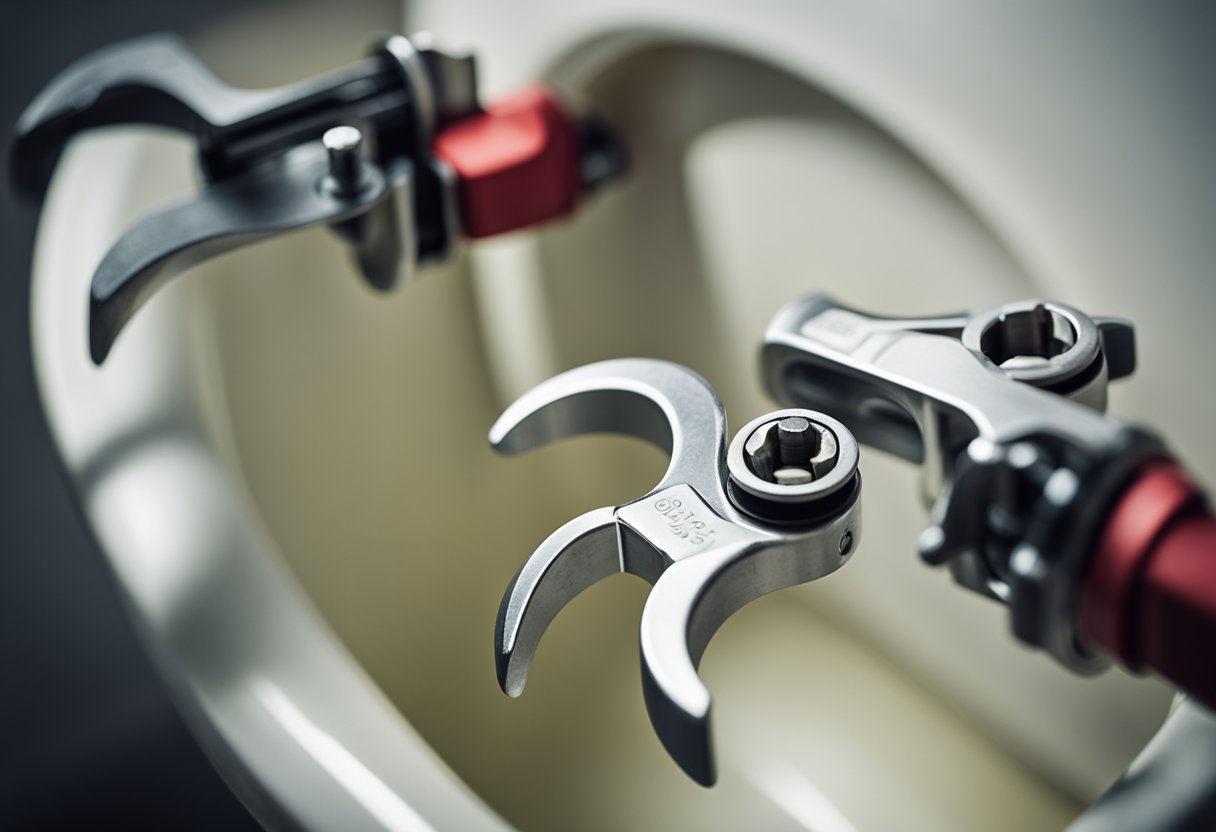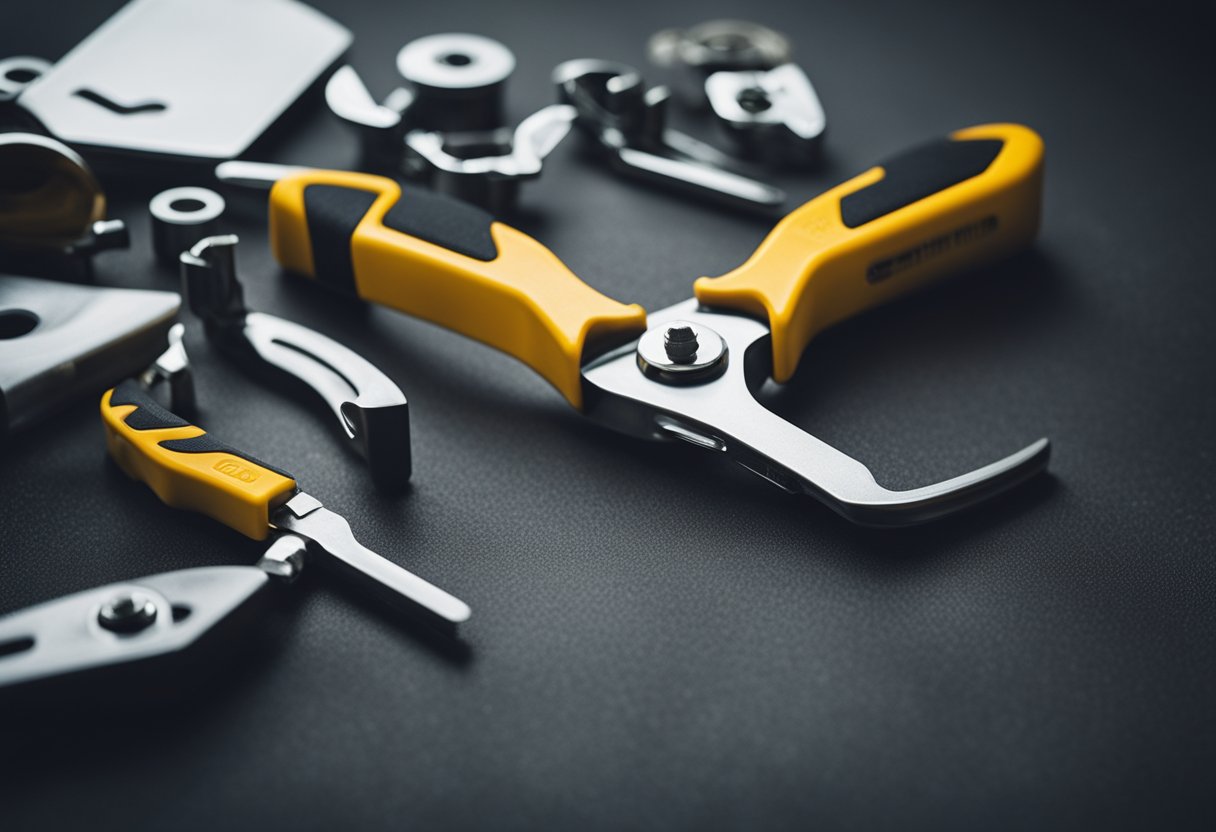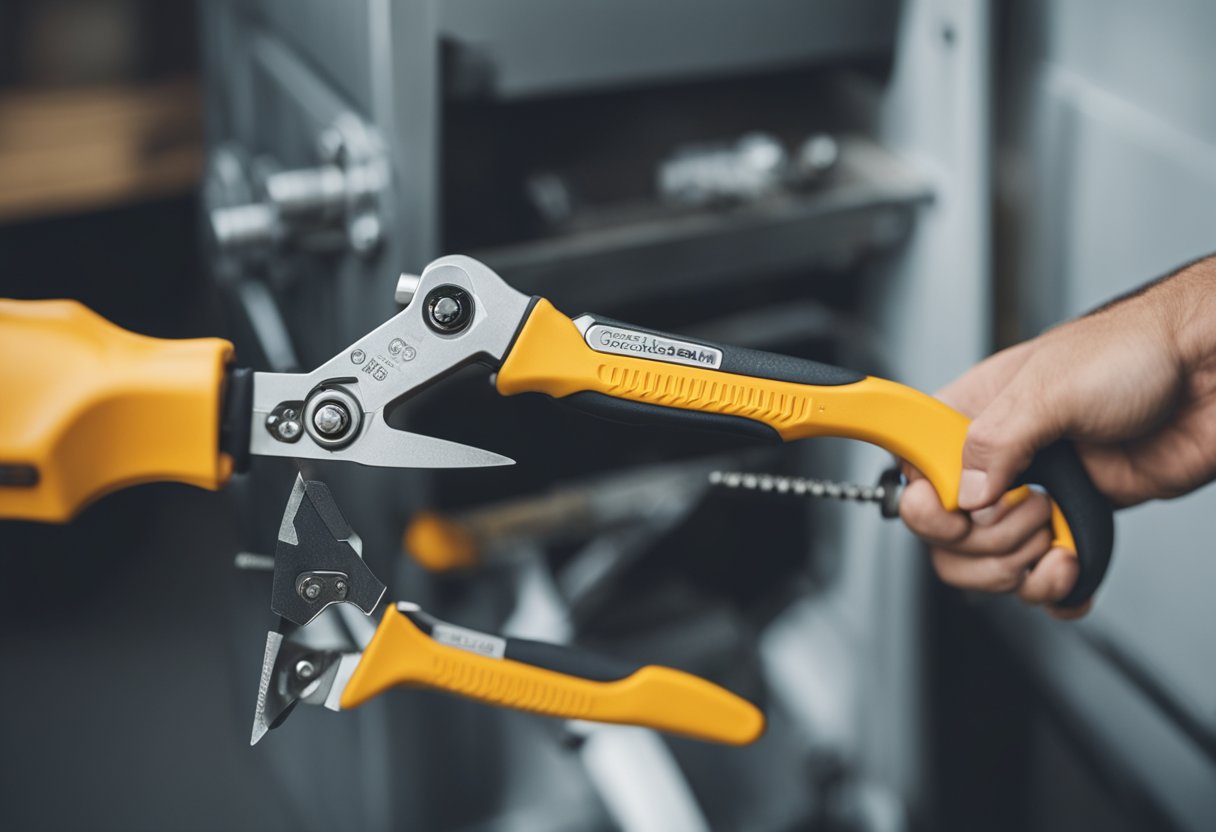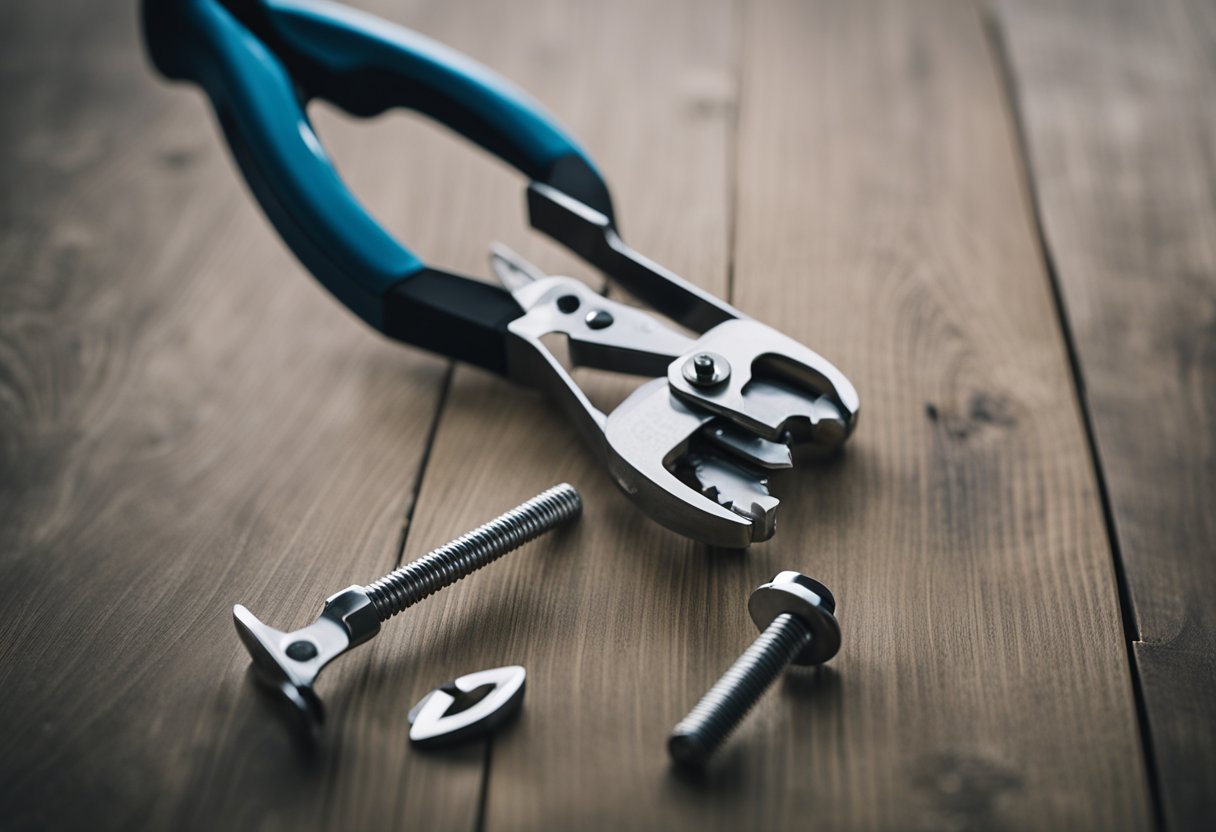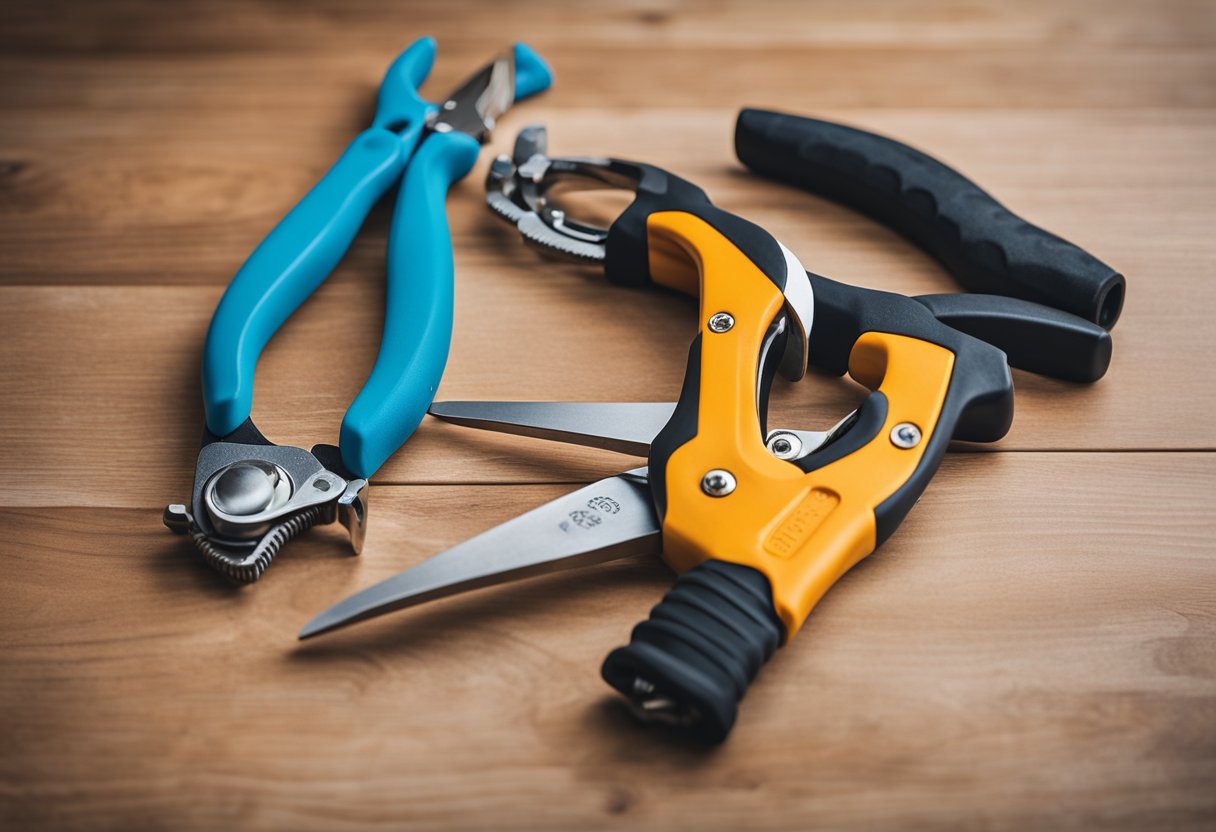Cutting toilet bolts is a necessary skill for any DIY enthusiast looking to install a new toilet or replace an old one. Toilet bolts are the metal bolts that secure the toilet bowl to the flange, and they often need to be cut to size to fit properly. However, cutting toilet bolts can be a daunting task, especially if you are new to DIY projects. In this article, I will guide you through the process of cutting toilet bolts step by step, so you can get the job done quickly and easily.
To begin, it is important to understand the anatomy of a toilet bolt. Toilet bolts consist of a threaded end that screws into the flange, and a smooth end that fits into the base of the toilet bowl. The smooth end is often too long and needs to be cut to size. There are several tools you can use to cut toilet bolts, including a hacksaw, an oscillating multi-tool, or a reciprocating saw. Each tool has its advantages and disadvantages, and we will discuss them in more detail later in the article.
Before you start cutting toilet bolts, it is important to take some safety precautions. Wear gloves, eye protection, and a dust mask to protect yourself from metal shavings and dust. Make sure the toilet is securely in place and cannot tip over while you are working on it. With these precautions in mind, let’s dive into the process of cutting toilet bolts.
Key Takeaways
- Understand the anatomy of a toilet bolt before cutting it.
- Use the right tools for the job.
- Take safety precautions before cutting toilet bolts.
Understanding Toilet Bolts
As a DIY enthusiast, I have learned that toilet bolts are an essential component when it comes to installing or repairing a toilet. Toilet bolts are also known as closet bolts or toilet tank bolts. These bolts are usually made of brass or steel and are used to secure the toilet bowl to the floor flange.
Over time, these bolts can become corroded or rusted, making it difficult to remove them during a repair or replacement. In such cases, it is best to cut the bolts to remove them.
When cutting toilet bolts, it is essential to use the right tools and techniques to avoid damaging the toilet bowl or tank. A hacksaw or an oscillating multi-tool can be used to cut down toilet bolts. It is important to clamp the hacksaw tightly in the frame to prevent vibration and to keep the blade perpendicular to the bolt while applying steady back-and-forth pressure.
Before cutting the bolts, it is crucial to measure the length of the bolt and mark it with a marker. This will ensure that the bolt is cut to the correct length. It is also important to loosen the bolts using a pipe wrench and channel locks before cutting them.
In conclusion, understanding toilet bolts is crucial when it comes to installing or repairing a toilet. When cutting toilet bolts, it is important to use the right tools and techniques to avoid damaging the toilet bowl or tank. By following these simple steps, you can easily cut toilet bolts and complete your DIY project with confidence.
Tools Required for Cutting Toilet Bolts
When it comes to cutting toilet bolts, you’ll need the right tools to get the job done effectively and safely. Here are some of the tools you’ll need:
Hacksaw
A hacksaw is a classic tool for cutting metal, and it can be used to cut toilet bolts as well. Make sure to use a blade with fine teeth to get a clean cut. You can also use a mini hacksaw for more precise cuts.
Rotary Tool
A rotary tool, such as a Dremel, can be used to cut through toilet bolts quickly and easily. Make sure to use a metal cutting disc and wear eye protection.
Bolt Cutter
A bolt cutter is a powerful tool that can make quick work of cutting through toilet bolts. However, it can be difficult to use in tight spaces.
Pliers and Adjustable Wrench
Pliers and an adjustable wrench can be used to grip and twist the toilet bolts until they snap off. This method requires some strength and patience, but it can be effective.
Sawzall and Oscillating Multi-Tool
A sawzall or an oscillating multi-tool can be used to cut through toilet bolts quickly and easily. These power tools are great for larger jobs, but they can be expensive.
Socket Wrench and Breaker Bar
A socket wrench and breaker bar can be used to loosen the nuts on the toilet bolts, making them easier to cut. This method requires some strength and patience, but it can be effective.
Protective Gear
No matter which method you choose, it’s important to wear protective gear, such as goggles, safety glasses, and protective gloves. Rubber gloves can also be helpful for added grip and protection.
By having the right tools and protective gear, you’ll be able to cut toilet bolts safely and effectively.
Preparation Before Cutting
Before cutting toilet bolts, it is essential to prepare the work area to ensure safety and prevent damage to the toilet and the floor. Here are some essential steps to follow:
1. Turn Off Water Supply
The first step is to turn off the water supply to the toilet tank. This will prevent water from spilling out when you remove the toilet tank from the base. Locate the water valve behind the toilet and turn it clockwise to shut off the water supply.
2. Remove Toilet Tank
Next, remove the toilet tank from the base. To do this, disconnect the water supply hose from the bottom of the tank and unscrew the bolts that hold the tank to the base. Lift the tank off the base and set it aside in a safe place.
3. Remove Toilet Base
If you need to cut the bolts that hold the toilet base to the floor, you may need to remove the entire toilet. To do this, turn off the water supply and flush the toilet to drain the water from the tank and bowl. Use a wrench to disconnect the water supply line from the bottom of the tank. Then, unscrew the bolts that hold the base to the floor and lift the toilet off the flange.
4. Wear Gloves
When working with toilet bolts, it is essential to wear gloves to protect your hands from cuts and scratches. Nitrile gloves are an excellent option as they are durable and resistant to chemicals.
5. Inspect Washers
Before cutting the bolts, inspect the washers to ensure they are in good condition. The base washer is made of rubber and sits between the toilet base and the floor. The metal washer sits between the bolt head and the base washer. If the washers are damaged or worn, replace them before reinstalling the toilet.
By following these steps, you can prepare the work area for cutting toilet bolts safely and efficiently.
Step-By-Step Guide to Cutting Toilet Bolts
https://www.youtube.com/watch?v=z0DE7MsLbjU&embed=true
Cutting toilet bolts is a common task that you may need to perform when replacing or repairing a toilet. Here is a step-by-step guide that will help you cut toilet bolts like a pro.
Step 1: Turn Off the Water Supply
Before you start cutting toilet bolts, you need to turn off the water supply to the toilet. This will prevent water from spilling out of the tank and onto the floor. To turn off the water supply, locate the shut-off valve behind the toilet and turn it clockwise until it stops.
Step 2: Remove the Nuts
To cut the toilet bolts, you need to remove the nuts that hold the toilet in place. Use a wrench to loosen the nuts and then remove them by hand.
Step 3: Cut the Bolts
Now it’s time to cut the bolts. Insert a hacksaw blade between the tank and bowl near one of the bolts. Keep the blade perpendicular to the bolt and apply steady back-and-forth pressure. Be careful not to apply too much pressure, as this can damage the toilet.
Alternatively, you can use a reciprocating saw or an angle grinder to cut the bolts. However, these tools can produce hot sparks, so be sure to wear eye protection and work in a well-ventilated area.
Step 4: Clean Up
After cutting the bolts, remove the toilet and clean up any debris. Use a wire brush to remove any rust or corrosion from the bolts and replace them with new ones if necessary.
In conclusion, cutting toilet bolts is a straightforward process that anyone can do with the right tools and a little bit of know-how. By following this step-by-step guide, you can cut toilet bolts quickly and easily without damaging your toilet.
Dealing with Rusted or Corroded Bolts
https://www.youtube.com/watch?v=YmRGR16l6BU&embed=true
Cutting toilet bolts can be a daunting task, especially when they are rusted or corroded. However, with the right tools and techniques, it is possible to remove them without damaging your toilet or injuring yourself. In this section, I will discuss some effective methods for dealing with rusted or corroded bolts.
Penetrating Oil
One of the most effective ways to deal with rusted or corroded bolts is by using a penetrating oil. This type of oil is designed to seep into the microscopic gaps between the threads of the bolt and the nut, loosening the rust and corrosion and making it easier to remove the bolt. You can buy penetrating oil at most hardware stores, and it is relatively inexpensive.
To use penetrating oil, simply apply it generously to the bolt and let it sit for a few hours or overnight. The longer you let it sit, the better it will work. Once the oil has had time to work its magic, try to remove the bolt using a wrench or pliers. If it still won’t budge, you may need to try another method.
Vinegar
Vinegar is another effective way to deal with rusted or corroded bolts. The acidity of the vinegar helps to break down the rust and corrosion, making it easier to remove the bolt. To use vinegar, simply soak a cloth or paper towel in vinegar and wrap it around the bolt. Let it sit for a few hours or overnight, then try to remove the bolt using a wrench or pliers.
Metal Blade
If all else fails, you may need to resort to cutting the bolt. To do this, you will need a metal blade that is strong enough to cut through the bolt. You can use a hacksaw, reciprocating saw, or angle grinder with a metal cutting blade. Be sure to wear protective eyewear and gloves when using these tools.
To cut the bolt, simply position the blade as close to the toilet base as possible and start cutting. Be sure to cut slowly and carefully, as you don’t want to damage the toilet or injure yourself. Once the bolt is cut, you should be able to remove the toilet without any problems.
Conclusion
Dealing with rusted or corroded bolts can be a frustrating experience, but it doesn’t have to be. By using a penetrating oil, vinegar, or a metal blade, you can remove even the most stubborn bolts without damaging your toilet or injuring yourself. Just be sure to take your time and use the right tools for the job.
Replacing Cut Toilet Bolts
https://www.youtube.com/watch?v=xcBV5BZR1I4&embed=true
After cutting the toilet bolts, the next step is to replace them with new ones. This is an important step to ensure that the toilet is securely fastened to the flange and prevent any leaks or wobbling.
First, remove the old bolts by unscrewing the nuts that secure them in place. If the nuts are rusted or corroded, you may need to use a wrench or pliers to loosen them. Once the nuts are removed, lift the toilet off the flange and set it aside.
Next, remove any remaining wax ring from the flange and clean the area thoroughly. It is important to ensure that the flange is clean and free of debris before installing the new bolts.
Insert the new bolts into the flange and secure them in place with the threaded adapters provided. Make sure that the bolts are straight and level before tightening the nuts.
Once the new bolts are in place, it is recommended to install a new wax ring to ensure a tight seal between the toilet and the flange. Place the wax ring onto the flange and carefully lower the toilet onto the bolts, making sure that the bolts are aligned with the holes in the base of the toilet.
Finally, tighten the nuts on the bolts, being careful not to overtighten them as this can crack the toilet base. Use a wrench or pliers to tighten the nuts until the toilet is securely fastened to the flange.
In conclusion, replacing toilet bolts is a simple process that can be done with a few basic tools and some patience. By following these steps, you can ensure that your toilet is securely fastened to the flange and prevent any leaks or wobbling.
Finishing Touches
Now that the toilet bolts are cut to the correct length, it’s time to add the finishing touches. One essential step is to add the toilet bolt caps to cover the bolts and give them a neat, finished look.
Toilet bolt caps come in various styles, including decorative and tall toilet bolt caps. Some are threaded caps that screw onto the bolt, while others are plastic caps that snap onto the bolt.
To install the caps, first, use a putty knife to remove any excess wax or debris from around the base of the toilet. Then, snap or screw on the caps, making sure they are snug and secure.
It’s important to note that some toilet seats may need to be removed to access the bolts and install the caps. Refer to the manufacturer’s instructions for your specific toilet seat to ensure proper installation.
In conclusion, cutting toilet bolts is a simple DIY task that can save you time and money. By following the steps outlined in this guide, you can confidently cut your toilet bolts to the correct length and add the finishing touches with toilet bolt caps.
Safety Measures
As with any DIY project, safety should always be your top priority when cutting toilet bolts. Here are some essential safety measures to follow:
- Wear eye protection: When using saws or cutters around porcelain fixtures, it’s crucial to wear protective goggles or safety glasses. ANSI Z87.1 certified safety goggles are recommended for maximum protection against eye injuries.
- Protect your hands: You can use protective gloves or rubber gloves to protect your hands from cuts and bruises while handling sharp tools.
- Unplug power tools: Always unplug power tools before making any adjustments near the blade to prevent accidental injuries.
- Clear the workspace: Make sure your work area is clear of any clutter or debris that could cause accidents. Keep your tools and equipment organized and within reach.
- Follow manufacturer instructions: Always follow the manufacturer’s instructions when using power tools or cutters. Read the user manual carefully and follow the recommended safety guidelines.
By following these safety measures, you can minimize the risk of injuries and ensure a successful DIY project.
Frequently Asked Questions
https://www.youtube.com/watch?v=C2MfU4wKW3o&embed=true
How can I remove rusted toilet bolts?
Rusted toilet bolts can be difficult to remove, but there are a few methods that can help. One option is to use a penetrating oil, such as WD-40, to loosen the rust. Simply spray the oil on the bolts and let it sit for a few hours before attempting to remove them with a wrench. Another option is to use a hacksaw or reciprocating saw to cut through the bolts. Be sure to wear gloves and eye protection when using these tools.
What are the best tools to cut off toilet bolts?
There are several tools that can be used to cut off toilet bolts, including a hacksaw, reciprocating saw, rotary tool, and oscillating multi-tool. Each tool has its advantages and disadvantages, so it’s important to choose the one that best suits your needs. A hacksaw is a good option for small jobs, while a reciprocating saw is better for larger jobs. A rotary tool or oscillating multi-tool can be used for precision cuts.
How do I snap off toilet bolts?
Snapping off toilet bolts can be done with a pair of pliers or a bolt cutter. Simply grip the bolt with the pliers or bolt cutter and twist it until it snaps off. Be sure to wear gloves and eye protection when using these tools.
What can I use to cut toilet seat bolts?
To cut toilet seat bolts, a hacksaw or reciprocating saw can be used. Simply cut through the bolts with the saw, being careful not to damage the toilet or seat.
How do I attach toilet bolt caps?
To attach toilet bolt caps, first remove the old caps if they are still attached. Then, slide the new caps over the bolts and snap them into place. Be sure to align the caps with the bolt holes before snapping them into place.
What should I do if the toilet bolt is stuck on the base?
If the toilet bolt is stuck on the base, try using a penetrating oil, such as WD-40, to loosen it. If that doesn’t work, try gently tapping the bolt with a hammer to loosen it. If the bolt still won’t budge, you may need to use a hacksaw or reciprocating saw to cut through it. Be sure to wear gloves and eye protection when using these tools.

Hi, I’m Sal Muller of Tooltrip.com. My DIY experience led me to understand essential power tools for home projects. Tooltrip.com guides enthusiasts and professionals in choosing right tools for any job. I provide concise top tool reviews for easier, efficient DIY.

